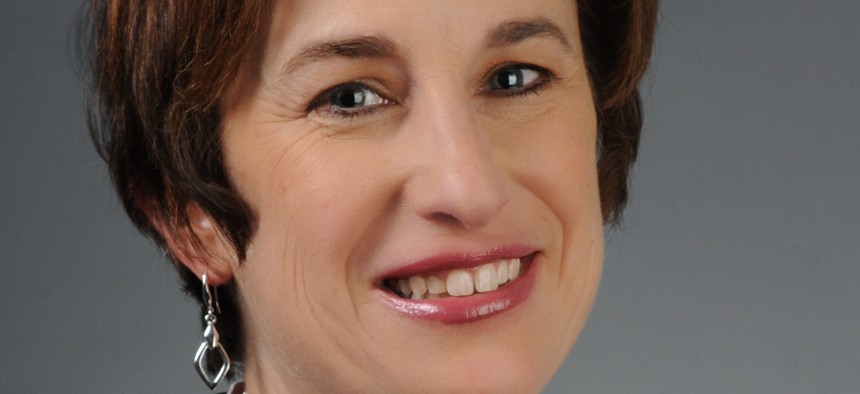Opinion
Opinion: The crisis in New York’s child welfare system must be addressed
The solution starts with comprehensive care

Maria Cristalli is president and CEO of Hillside Children’s Center (Image courtesy of Hillside Children's Center)
New York State has long been a vanguard in child welfare with policies that prioritize family preservation and community-based services. This well-intended approach has yielded positive results for many children but has unintentionally left behind those with the most severe mental health needs. As the system has evolved, a distressing gap has emerged. Children with acute behavioral health needs and co-occurring disorders are increasingly falling through the cracks, causing a profound ripple effect within residential treatment centers (RTCs) and the wider community. This demands immediate attention and action.
According to the Office of Children and Family Services, in quarter one of 2019 there were 6,021 beds available for young people in congregate care. That includes beds in institutions, group residences, group homes, agency-operated boarding homes, and supervised independent living facilities. In quarter one of 2023, that number dropped to 3,764. A startling 37% reduction in beds in just four years. Nonprofit groups have also shut down more than half of the beds in New York’s residential treatment facilities for kids, due in part to state payments too low to keep programs running. This reduction in capacity has exacerbated the challenges facing organizations that serve young people with profound needs. Faced with limited options, many RTCs are now accepting children whose mental and behavioral health needs far surpass their designated level of care.
The ramifications of this insufficient care are dire. On one hand, we see a rise in violence within residential campuses and their surrounding communities. Instances of self-harm and suicide attempts among young people are also on the rise. Meanwhile, resource allocation has veered away from children appropriately placed in RTCs. The resulting picture is grim: property damage, high staff turnover, community outrage, and an increased burden on first responders.
Many nonprofit RTCs provide the bulk of these crucial services and are approaching a breaking point. Organizations like the Council of Family and Child Caring Agencies (COFCCA) and the New York State Coalition for Children’s Behavioral Health (CCBH) have sent letters to state authorities, calling attention to this crisis and requesting immediate action.
Unless the state acts to change these alarming circumstances, children and youth will continue to suffer. Due to a lack of funding for additional staff to provide adequate supervision, one provider cites a parent in New York pulling her appropriately-placed child from programming because of the number of times he was assaulted. Another provider notes that without adequate supervision and care for children exhibiting violent behaviors, the need for emergency response calls becomes more frequent as youth engage in property destruction and assaultive behaviors. Because these programs are not adequately funded, and in turn staffed, to support the spectrum of needs and behaviors presented, youth can experience setbacks in therapeutic care and treatment. Providers are experiencing these crisis levels in New York, and across the country.
But this is not a problem that can be fixed by merely reversing cuts or allocating more funds for additional beds in RTCs—although that would be a start. What is needed is a multi-pronged strategy that addresses the unique needs of these children. Expanded levels of care can support a more tiered and nuanced system, with specialized centers equipped to deal with the most severe cases. Ensuring that staff are adequately trained to handle acute mental and behavioral issues is critical to the system's efficacy.
We also need a renewal of community partnerships. A collaborative approach involving communities, local organizations, and state authorities can yield more enduring solutions.
There is a role for the broader healthcare system as well. Early detection and diagnosis support a robust preventative approach that catches these issues early and can mitigate the need for acute care later on.
New York State has always led by example in child welfare. However, it's time to reevaluate and recalibrate our approach, ensuring that all children—regardless of the complexity of their needs—receive the care they deserve.
The time for action is now. Our children can't wait.
Maria Cristalli is president and CEO of Hillside Children’s Center.
NEXT STORY: Opinion: Here's how to get the state to actually work for the frontline feeding sector
